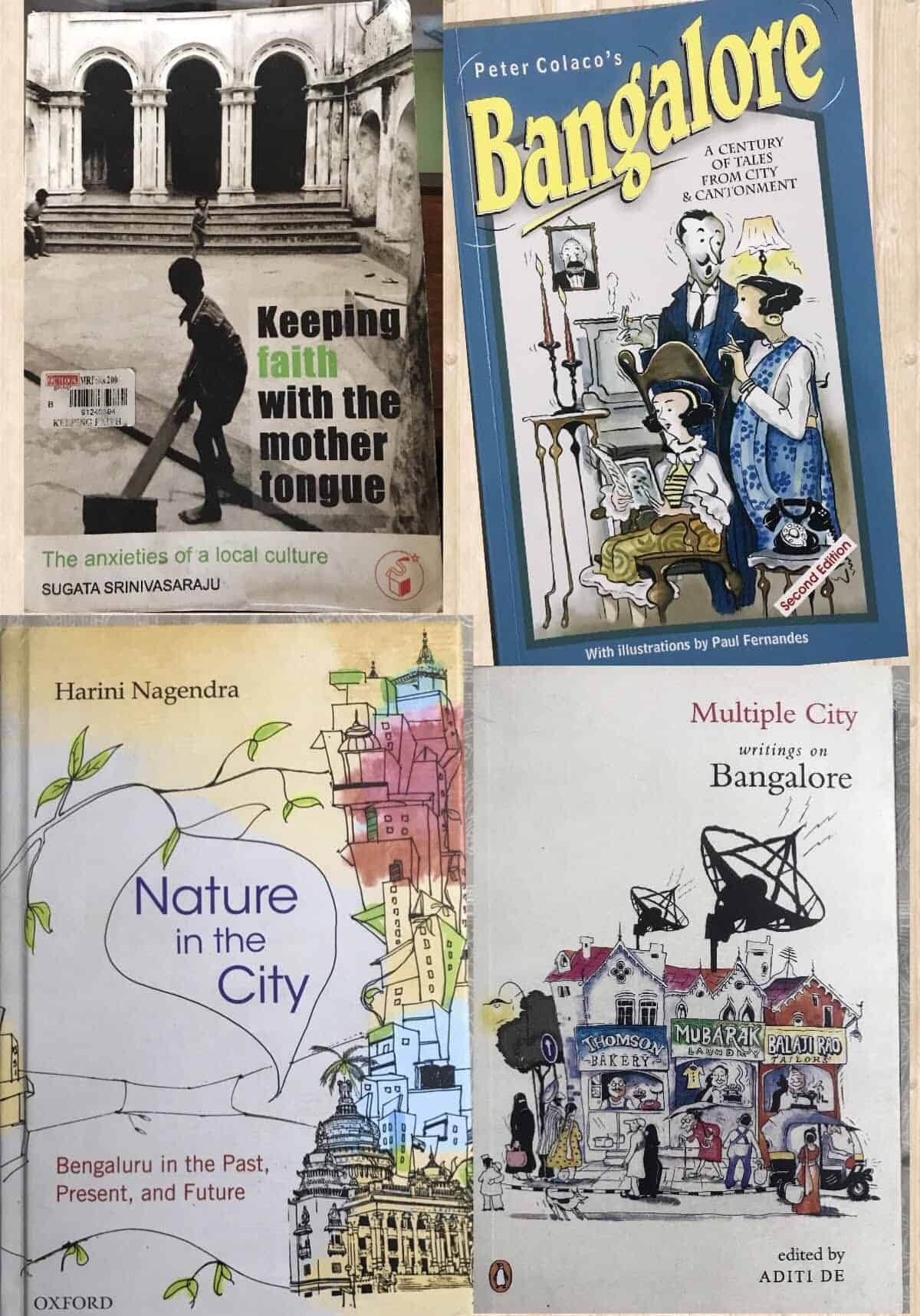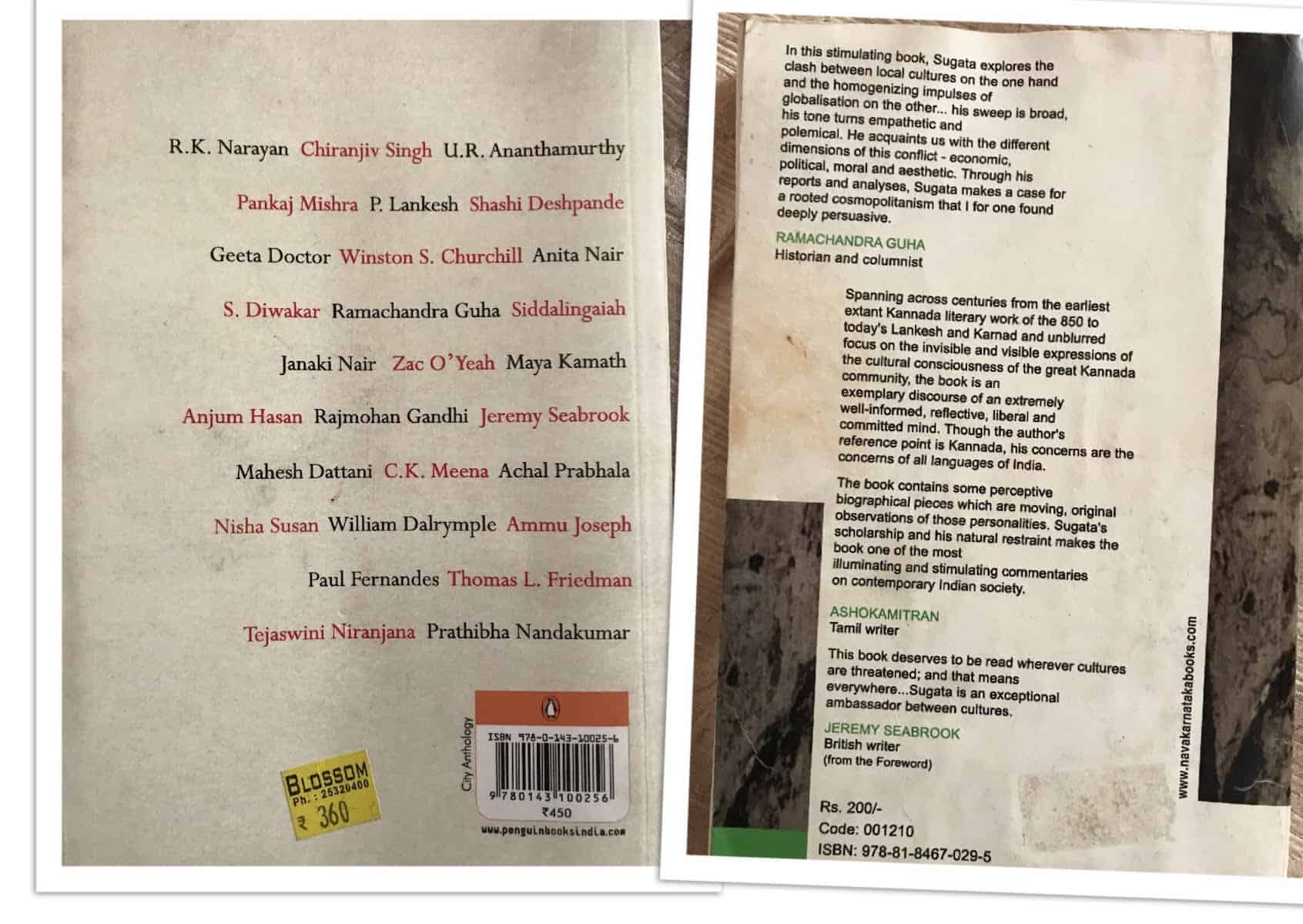A conversation from a few weeks ago:
Paul : So, what was that ChukuBuku Beku thing about? You guys did that after the steel flyover beda, right?
Me: That was to bring attention to the long-pending demand for suburban train service. We see local train as a great solution to our traffic woes and pollution. To make that point, more than a thousand of us took a train from Cantonment to Whitefield station to generate public support for the cause.
Paul : Oh! interesting. Back in the day, we used to wear our suit-boot and take the train to Whitefield for dancing in the club!
I had no idea that people in the city used to go to Whitefield all dressed up formally to party. These days, lakhs of people head there every day, casually dressed for work, being stuck for hours, cursing traffic and politicians all the way!
Paul is the great artist Paul Fernandes, who we met a few weeks ago in his beautiful store “aPaulogy” to seek his artistic help with BekuBedaSanthe.
I noticed the book ‘Bangalore’ by Peter Colaco with amazing illustrations by the man standing next to me and picked it up instinctively. I couldn’t wait till I got home to start reading it. The romance of Bangalore comes alive instantly and I was laughing out loud every other page. I also felt proud of what this city used to be and continues to be till date. The writing style and the illustrations are such joy, they need to be experienced first hand.
I was going to share my encounter with this book so more of you can enjoy this little gem but then I figured I might as well highlight three other books that I consider to be must-read for anyone interested in Bengaluru and it’s great history, unique sub culture, fabulous people, the great institutions and spectacular public spaces that celebrate nature like few other cities do.
So here they are, four lovely books on namma Bengaluru, highly recommended by me 🙂

The first one of course is ‘Bangalore, A Century of Tales from City and Cantonment’ by Paul Colaco. You may also call it ‘the joy of little things in every day Bangalore’.
2. Keeping the faith with the mother tongue: the anxieties of a local culture
I read “Keeping the faith with the mother tongue” by Sugata Srinivasa Raju many years ago. It is one of those books that helped me understand my new home town better and I keep going back to it once in a while.
The tag line of the book is ‘the anxieties of a local culture’ and every essay in the book does justice to that. If you are curious about the literary geniuses of Kannada and want to know about Lankesh, Shivaram Karanth, ‘Kannada Kanteerava’ Rajkumar and many other stalwarts of Karnataka, this is the book you must pick up.
Sensitive topics like chauvinism and cosmopolitan culture, impact of IT influx into Bengaluru have been addressed superbly making you identify with the anxieties of local people. I wish the author brings out the next revision with new essays as things have changed even more dramatically.
3. Multiple City : Writings on Bangalore
How did Bengaluru become the Silicon Valley of India? I often think about that and I feel the foundations were laid way back and progressive governments and intelligentsia systematically encouraged higher education, scientific research and a spirit of entrepreneurship (without “branding”).

What prompted Bangalore go back to its original name Bengaluru? Read what one of the greatest sons of this soil, Jnanipeeth award winner, U R Anantha Murthy had to say about that. Want to know about boiled beans and the battles of Bengaluru? Ranga Shankara is such an integral part of our city now, but how did it come about?
The anecdotes in ‘The Wholly Raman Empire’ by Shobhana Narasimhan will make you laugh out loud and take you back to the world when Bangalore was at the forefront of pure science research. It was fascinating to read Ammu Joseph’s dream and Shashi Deshpande’s personal map of Bengaluru.
All this and a lot more in this delightful compilation called ‘Multiple City, writings on Bangalore’ edited by Aditi De that you must read cover to cover.
4. Nature in the City
Nature in the City is a book that will make you understand the history of our city from a unique perspective and chronicles the trend of nature in the city moving away from being multi-functional, social usage to largely aesthetic and recreational. One of the revelations I found fascinating is that, way back in 1800, a British Officer reported that the lakes are losing their character and by 1830, every lake had been repaired and restored by the then government so much so that by the end of the century there was no space left to build any more lakes!
Many of us have heard Harini Nagendra speak on the subject, but you should still read this book if you want to go deeper into how this city became garden city over the centuries and how it is rapidly losing it. It also gives you hope by showing how active citizen engagement helped protect the commons and inspires one to get involved.
There you have it! I hope I got you excited enough to read them all and respectfully suggest that you buy them all from a brick and mortar book store, and get lots of copies to give as gifts. That would be a beautiful tribute to everyone that made this city what it is!
A journey from Bendakalooru to Bengaluru via Bangalore will lead you to traffic jams